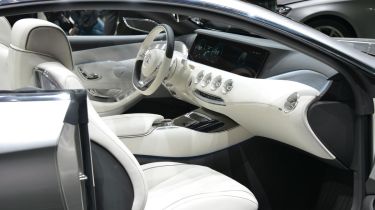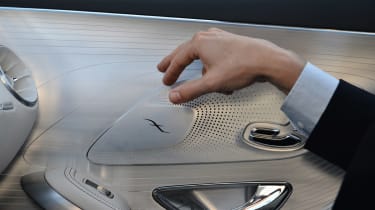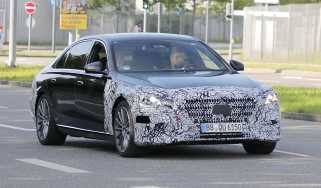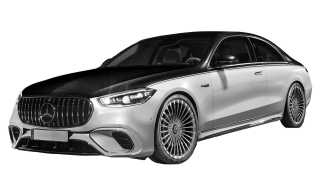Interior secrets of next-generation Mercedes S-Class
Mercedes head of interior design reveals the secrets of what’s coming next in Mercedes top-end models

Mercedes is already experimenting with a raft of new technology for the next-gen S-Class, due on sale in 2018. Among the innovations being investigated are gesture controls, 3D-printed trim pieces, plus lightweight one-piece seats and one-piece air vents. Auto Express spoke with Mercedes’ chief interior designer Jan Kaul at the brand’s headquarters in Stuttgart Germany. In the vast design workshops, Kaul talked us through examples of his work and how Mercedes plans to steal back a reputation for wow-factor cabin design from Audi and Tesla.
Mercedes gesture control technology
“Yes, we are working [on gesture controls] for some functions, but of course, using hand signals is not right for everything”, Kaul explained miming hand gestures. “For example, if you are inputting a destination to the navigation, this is easier with voice recognition or a menu than gestures. But it is something we are continuing to work on, and you will see it soon”. Something else set to make the leap from concept to showrooms is lightweight, single-piece trim fittings. The S-Class Coupe concept from the 2013 Frankfurt Motor Show used distinctive one-piece seats and one-piece air vents to convey a sense of simplicity. Jan says with a smile: “these are coming very soon. The [one piece] seats are difficult because we must make the stitching and leather last the life of the car, but our designers are working very hard”.

The interior design boss also expressed confidence that slimmer one-piece seats would still be capable of incorporating the heating, cooling, massage and adjustment functions currently offered in Mercedes cars. Could the one-piece air vents, and other intricate details like the speaker grilles be 3D printed, making them stiffer, lighter and faster to manufacture? “Yes, for sure”, is the reply from Kaus. “But this is a question of margins – we must be making [thousands of these] components to be sure the quality and cost [is viable].
Mercedes virtual instrument binnacle
Asked how Mercedes would react to Audi’s switch from central infotainment screens to a virtual instrument binnacle in the new TT, Kaus said ‘it is something we will look at, but we only do things because that are right for us, not because our rivals do.” The same reply is offered when we ask Kaus’ opinion of Tesla’s revolutionary giant 16-inch touchscreen in the Model S electric saloon. “Touchscreen is not always the right choice for all customers, and it can be unsafe because you must take your eyes [off] the road. In the Tesla, the screen is so large than some functions are too low [down on the dashboard].” We also put a common reader question to Kaus – why not make Mercedes’ infamous ‘floating’ tablet-style screens a detachable tablet, or simply mould them into the main dashboard?
“No, we cannot [have a detachable tablet screen] because of safety”, Kaus says. “We cannot have screens coming loose in a crash and causing an injury, so it must be very solidly fixed. Raising the screen [above the dashboard] keeps it in the driver’s line of sight.” Kaus went on to dispel the myth that a ‘floating screen’ is simply a cheap way to avoid heat build-up in the dashboard, and scorned Audi’s ‘pop-up’ MMI screens, which retract into the dashboard when not in use. “We had a pop-up screen in the [pre-facelift last-gen] C-Class. It [had] a very complicated mechanism, and there is no point, because every time you get in the car, you want to use the navigation or stereo or telephone – so you need the screen. There is no point [in making it disappear].
The Mercedes S-Class has always been packed with technological innovation. Which new features would you like to see on the next generation version? Tell us in the comments section below...
Find a car with the experts






